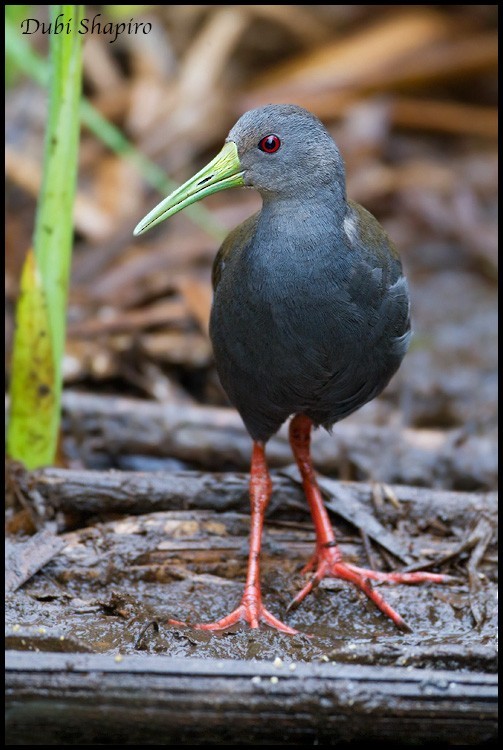Blackish Rail
A species of Neotropical Marshland Rails Scientific name : Pardirallus nigricans Genus : Neotropical Marshland Rails
Blackish Rail, A species of Neotropical Marshland Rails
Botanical name: Pardirallus nigricans
Genus: Neotropical Marshland Rails
Content
Description General Info
 Photo By Dubi Shapiro
Photo By Dubi Shapiro Description
The blackish rail (Pardirallus nigricans) is a species of bird in the rail family Rallidae from South America. The species is closely related to the plumbeous rail, and has been treated as being the same species, or placed with that species in the genus Ortygonax. It has also been placed in the genus Rallus. The blackish rail has a disjunct distribution. The nominate race is found from north-eastern Brazil south to south-east Brazil and west to northern Argentina and eastern Paraguay. A second disjunct population forms a rough crescent from western Brazil through Bolivia and central Peru to nearly the border with Colombia. The third population, from the subspecies O. n.caucae is found in central Colombia (it is named for the Cauca River). The species has also been reported in western Venezuela, but it is not known which subspecies this is or whether it represents a population or vagrant. Its natural habitat is swamps, wetlands, wet grasslands and rice fields, from sea level to 2,200 m (7,200 ft) (and occasionally 4,080 m (13,390 ft). They are not known to be migratory, but they have turned up in unexpected places, and are usually shy and retiring, so are poorly known. Little is known about their behaviour. They are assumed to feed on invertebrates and insects. A nest has been described as a cup placed on a stump. The clutch size is 2-3 and incubation time (in captivity) is 18–21 days. The black downy chicks leave the nest as soon as they hatch, and both parents care for the chicks. 
Size
29 cm
Nest Placement
Ground
Feeding Habits
Blackish Rail, a Blackish Rail, primarily consumes insects and invertebrates, foraging in open muddy shores alongside waterbirds or within marsh vegetation. Occasionally, blackish Rail exhibits opportunistic behavior by scavenging food scraps up to 5 meters into human areas.
Habitat
The blackish Rail typically resides in wetland environments, such as marshes and areas with dense aquatic vegetation. These birds also inhabit human-altered landscapes, including flooded rice fields. Their preferred terrain is often characterized by tall, damp grasses and occasionally found in swamp-like regions with sparse tree cover.
Dite type
Aquatic invertebrate eater
General Info
Feeding Habits
Bird food type

 Photo By Dubi Shapiro
Photo By Dubi Shapiro